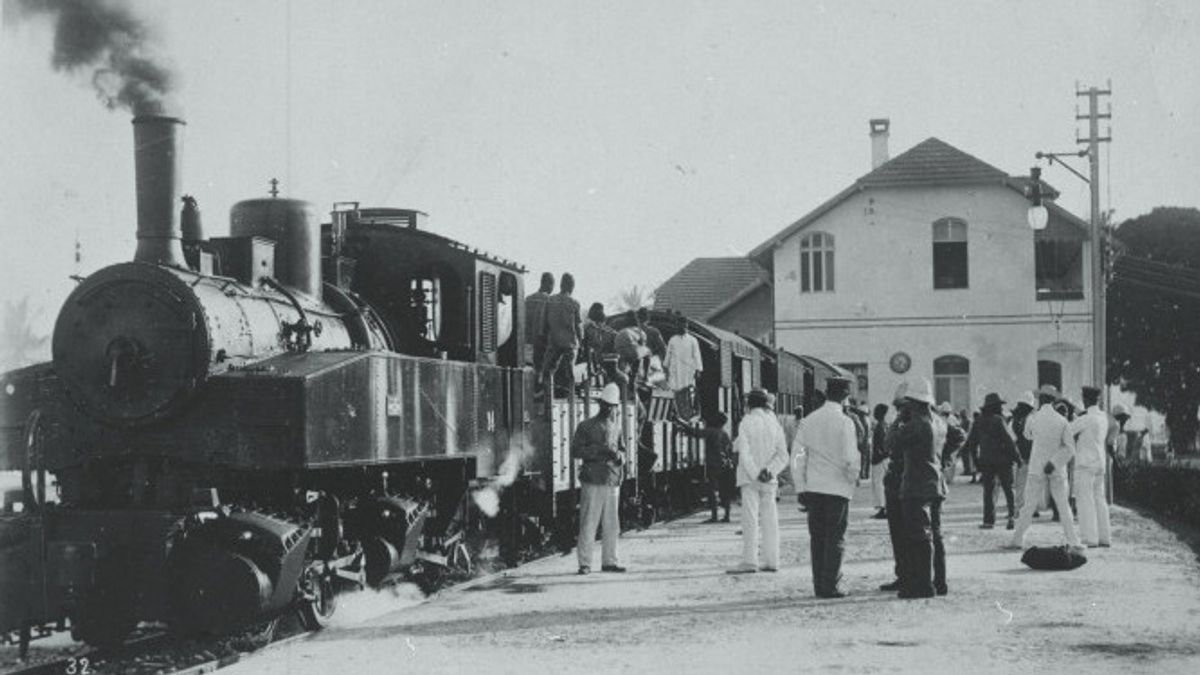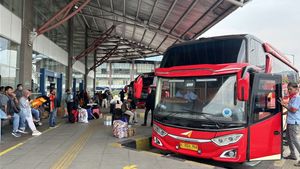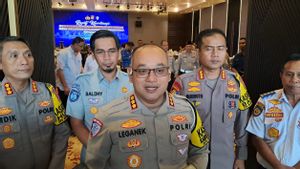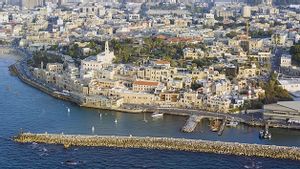JAKARTA - The Dutch East Indies colonial government supports the presence of no two trains. The mass transportation is considered capable of bringing abundant profits. Moreover, trains are predicted to mark a new century of human victory over distance and time.
Railway project planning is done carefully. From expert selection to train components. Everything is imported from Europe. The assessment was carried out because the Dutch refused to use used train components or low quality.
The colonial estuary that was perpetuated by the colonial government of the Dutch East Indies was a matter of profit. Where there is an advantage, Dutch support will follow. Mainly, in presenting adequate mass transportation tools.
This desire is because the Dutch have longed for a means of transportation capable of carrying large amounts of goods and humans. Everything is to make it easier for the Dutch to take advantage of their potential produce - coffee to tobacco-Nusantara in forced cultivation (1830-1870).
The Dutch also turned their brains. Fortunately, from the forced cultivation, he tried to turn it for investment in the rail procurement project. The owner of the power views the benefits of the presence of mass transportation as a burden. Instead of just money, trains are considered capable of encouraging other developments, from education to general health.
The Dutch King Williem I then issued a decree on the construction of the first train in the colony in 1842. The decree made the colonial government of the Dutch East Indies excited to map out the prospective train route. Even though it can only be executed properly 25 years later.
Actually, it took 25 years, after the decree of the first train from the king for the Dutch East Indies to build the first 25-kilometer iron rail on the colony, and it took 10 more years to build the next 300 kilometers in Java. With heavy and slow steps, not comfortably as suggested by Kopiist Magazine, trains in the Dutch East Indies finally appeared.
"In 1882, according to the words of a special commission from the educated Indich Genootschap: trains and small train tracks, namely trams, as well as in the Dutch East Indies, proved to be the most beneficial of the current findings, the most amazing victory by humans over time and distance, the most powerful incentive to work hard, exchange of values, and civilization," said Rudolf Mrazek in the book Engineers of Happy Land: Technological Development and Nationalism in A Colonion (2006).
The owner of power is not kidding in presenting trains in the Dutch East Indies. They appointed well-known engineers to oversee the running of the railway project. All kinds of train components use quality goods. Alias, no one uses used train components or low quality components.
Everything is new. In fact, the Netherlands brought in all components of the train from Europe. Among other things, technical equipment, rails, and carriages. The rest is only a few small parts of the train component that uses domestic materials. Take for example the use of teak wood for rail pads.
The construction of the railway line was carried out with full seriousness. This is because the trains are considered by the Dutch as the most promising investment. The Dutch East Indies government initially did not want to divide the train concessions. However, considering the vast territory of the archipelago, they began to provide concessions to private companies.
As a result, the Dutch effort to present a train in the archipelago paid off. Trayek Semarang-Yogyakarta also officially operates in 1867. Meanwhile, the Batavia-Buitenzor (Bogor) route only started operating in 1873. The presence of the two routes was greeted with great fanfare. After all, the power owner continues to move to build many other train routes.
The construction of the two routes was carried out under the general supervision of the chief engineer JP de Bordes, a former military officer with experience building railroad roads in the Netherlands. As a liberalist, and supported by the company, he carried out the construction using vrije arbeid (free labor), where he tried to implement construction technology from his experience in the Netherlands.
All rails and steel pads (sleepers) and bridges are imported from Europe. After a while of work, he realized that the usual method in the Netherlands was not entirely suitable for bumiputra workers whose posture was smaller than that of the Dutch. However, after a few adaptations, the construction could run more smoothly," said M. Sahari Besari in the book Technology in the Archipelago: 40 Century of Barrier Innovation (2008).
The English, Chinese, Japanese, Arabic, and French versions are automatically generated by the AI. So there may still be inaccuracies in translating, please always see Indonesian as our main language. (system supported by DigitalSiber.id)









